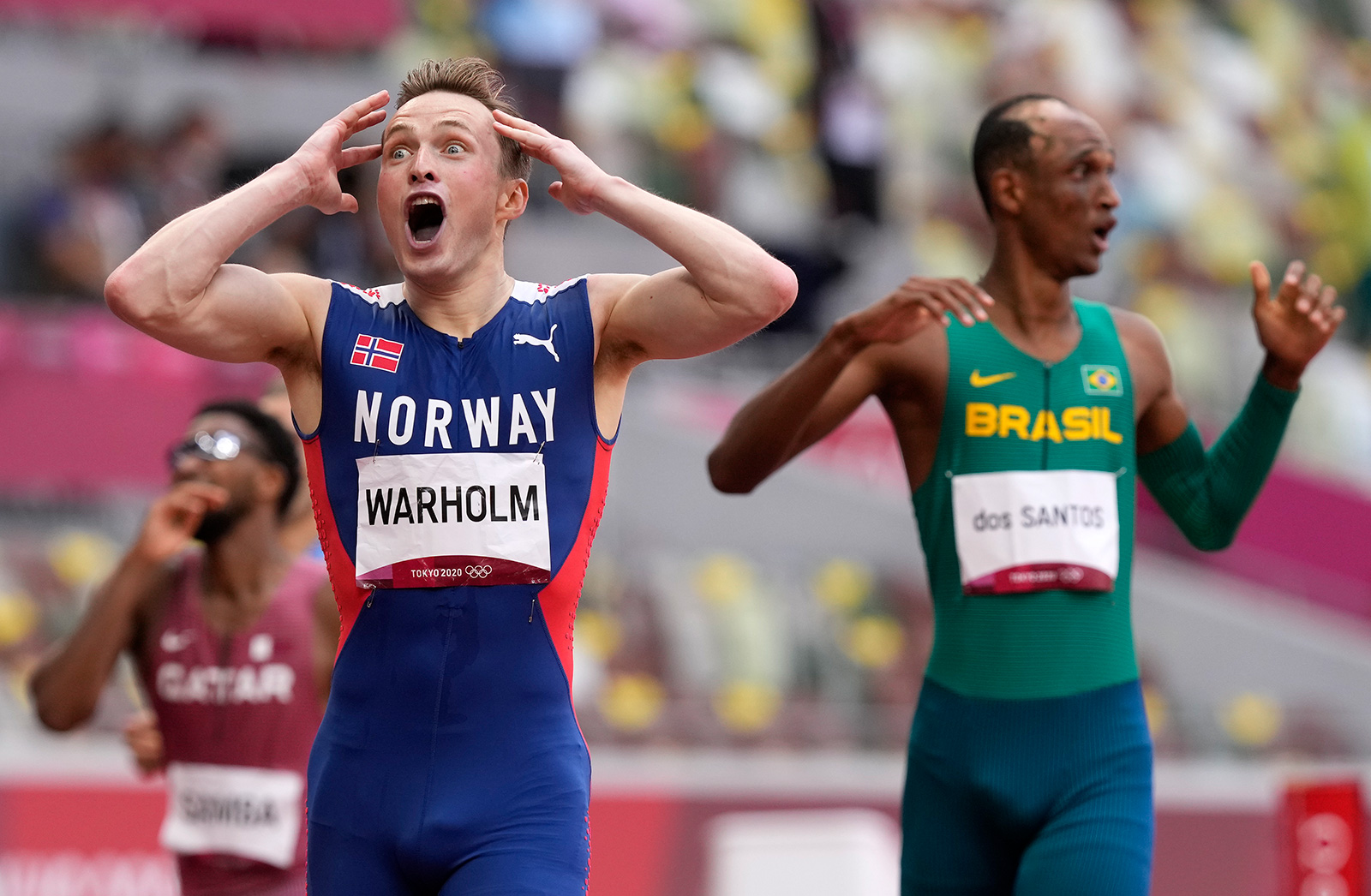The History of the 400m Final Men

The 400m final men has a rich history, showcasing the evolution of athleticism, technique, and strategy over decades. From the early days of the event to the modern era, athletes have pushed the boundaries of human performance, leaving an indelible mark on the sport. This journey has been marked by iconic athletes, groundbreaking advancements in training, and the influence of major championships.
The Early Years and Evolution of Technique
The 400m final men has been contested at the Olympic Games since the inaugural event in 1896. The early years were characterized by a focus on endurance and a running style that emphasized a long stride and minimal arm action. The first Olympic champion, Thomas Burke of the United States, ran a time of 54.2 seconds, a far cry from the sub-43-second times achieved today.
The evolution of the 400m final men’s technique began in the 1920s and 1930s, with athletes starting to adopt a more aggressive approach. The focus shifted to a shorter, quicker stride, with a greater emphasis on arm drive and a more upright posture. This change was driven by the need to generate more speed over the shorter distance.
“The key to success in the 400m is to maintain a high level of speed throughout the race. This requires a combination of power, speed endurance, and technique.” – Unknown
The Rise of the 400m Final Men at Major Championships
The 400m final men gained prominence at the Olympic Games and World Championships in the latter half of the 20th century. The event became a showcase for the world’s best athletes, with numerous legendary performances being etched into the annals of history.
- The 1960 Rome Olympics saw the emergence of the legendary American sprinter Otis Davis, who set a new world record of 44.9 seconds, becoming the first man to break the 45-second barrier.
- The 1968 Mexico City Olympics witnessed a remarkable performance by the American sprinter Lee Evans, who shattered the world record with a time of 43.86 seconds. This time stood for nearly 15 years.
- The 1980 Moscow Olympics saw the rise of the Soviet Union’s Viktor Markin, who won gold in a time of 44.60 seconds. His victory marked the first time a Soviet athlete won the 400m final men at the Olympics.
The Modern Era: Technological Advancements and Strategic Innovations
The modern era of the 400m final men has been characterized by technological advancements and strategic innovations that have pushed the limits of human performance. Athletes today benefit from sophisticated training methods, advanced equipment, and a greater understanding of biomechanics.
- The introduction of track surfaces with a synthetic material called tartan in the 1960s significantly reduced friction and allowed athletes to run faster.
- The development of specialized running shoes with improved cushioning and traction has also contributed to faster times.
- The use of advanced training methods, such as interval training and weightlifting, has helped athletes develop the power and speed endurance needed to excel in the 400m.
The Physical and Mental Demands of the 400m Final Men: 400 M Final Men

The 400m final men is a grueling event that demands a unique blend of physical and mental prowess. Athletes must possess exceptional speed, endurance, and tactical awareness to succeed in this challenging race.
The Physiological Requirements for Success
The 400m final men requires a specific combination of physiological characteristics. The race is short enough to require explosive speed and power, but long enough to necessitate significant aerobic capacity and lactate threshold.
- Speed and Power: The initial 100-200 meters of the race require explosive speed and power, similar to shorter sprints. Athletes need to generate maximum force quickly to achieve a fast start and maintain momentum.
- Aerobic Capacity: The latter half of the race, from 200-400 meters, demands significant aerobic capacity. Athletes must efficiently utilize oxygen to maintain speed and avoid fatigue.
- Lactate Threshold: The 400m final men pushes athletes beyond their lactate threshold, where lactic acid accumulates in the muscles. Athletes with a higher lactate threshold can tolerate higher levels of lactic acid, allowing them to maintain speed for a longer duration.
Comparing the Physical Demands to Other Sprint Events, 400 m final men
The 400m final men stands out from other sprint events in terms of its demands on both speed and endurance.
- 100m and 200m: These events prioritize explosive speed and power, requiring minimal aerobic capacity.
- 800m and 1500m: These events primarily focus on aerobic capacity and endurance, with less emphasis on speed and power.
- 400m: The 400m final men strikes a balance between speed and endurance, demanding both explosive power and sustained aerobic effort.
Mental Fortitude for Success
The 400m final men is not only physically demanding but also requires immense mental fortitude. Athletes must be able to manage pain, stay focused, and maintain a strong mental game throughout the race.
- Pain Management: As lactic acid builds up in the muscles, athletes experience significant discomfort and pain. They must be able to manage this pain and push through to the finish line.
- Focus and Concentration: Maintaining focus throughout the race is crucial. Athletes must be able to block out distractions and stay focused on their race strategy.
- Mental Toughness: The 400m final men is a highly competitive event. Athletes need to possess mental toughness to handle the pressure and maintain composure under intense competition.
The Strategies and Tactics Employed in the 400m Final Men

The 400m final is a race of intense physical and mental fortitude, demanding a strategic approach to maximize performance. Elite runners employ a combination of pacing, positioning, and race tactics to gain an advantage and secure victory. Understanding these strategies is crucial for appreciating the complexity and brilliance of 400m racing.
Pacing Strategies
Pacing is critical in the 400m, as runners must balance pushing their limits while avoiding premature fatigue. A well-executed pacing strategy allows runners to maintain a strong finish.
- Even Pacing: This strategy involves maintaining a consistent pace throughout the race, aiming for a smooth and controlled effort. It is often preferred by runners with a strong aerobic base and a consistent speed.
- Negative Split: A negative split strategy involves running the second half of the race faster than the first half. This approach is often used by runners with a powerful finishing kick, allowing them to gain an advantage in the latter stages of the race.
- Variable Pacing: This strategy involves adjusting the pace throughout the race, depending on the competition and the runner’s strengths. For example, a runner might start quickly to gain a lead or run a slower first lap to conserve energy for a powerful finish.
Positioning Strategies
Positioning on the track is crucial in the 400m final, influencing the runner’s ability to execute their pacing strategy and avoid obstacles.
- Lane 1: Runners in lane 1 have the shortest distance to cover, but they are at a disadvantage as they cannot see the other competitors. This lane is often preferred by runners who are confident in their pacing and have a strong finishing kick.
- Lanes 2-4: These lanes offer a good balance between distance and visibility. Runners in these lanes have a clear view of the competition and can adjust their strategy accordingly.
- Lanes 5-8: Runners in these lanes have the longest distance to cover and may struggle to see the competition. These lanes are often chosen by runners who prefer to stay out of the initial jostling and have a strong finishing kick.
Finishing Kick
The finishing kick is crucial in the 400m, often determining the winner. Elite runners develop powerful kicks through specific training and race tactics.
“The last 100 meters of a 400m race are all about mental toughness and the ability to dig deep and find that extra gear.” – Michael Johnson, 400m World Record Holder
- Sprint Finish: This involves a powerful acceleration over the final 50-100 meters, using all remaining energy to reach the finish line first.
- Sustained Finish: This involves maintaining a high speed over the final 100 meters, relying on endurance and strength to hold off competitors. This strategy is often employed by runners who are more comfortable with a longer, sustained effort.
Race Tactics and Psychological Warfare
The 400m final is not only a physical contest but also a mental battle. Runners use various tactics to gain a psychological edge over their opponents.
- Early Lead: Establishing an early lead can put pressure on competitors and force them to adjust their pacing strategies. This tactic is often used by runners with a strong start and a confident mindset.
- Late Surge: A late surge can catch opponents off guard and disrupt their race plan. This tactic is often used by runners with a powerful finishing kick and the ability to time their move perfectly.
- Psychological Games: Runners may engage in psychological games to throw off their opponents. This can include verbal taunts, strategic positioning, or even subtle body language to create doubt and uncertainty.
400 m final men – The 400m final men is always a thrilling race, filled with explosive speed and strategic maneuvering. One athlete who always brings excitement to the track is Soufiane El Bakkali , a Moroccan star known for his powerful finishing kick.
His presence in the 400m final men is sure to make the competition even more intense, as he’s always a contender for the top spot.
The 400m final for men is a sprint of pure power and speed, a test of raw athleticism. But if you’re looking for a race that combines that raw power with incredible endurance and skill, check out the men’s steeplechase final ! It’s a thrilling spectacle, with athletes leaping over hurdles and water jumps, pushing themselves to their absolute limits.
Just like the 400m final, it’s a race that leaves you breathless with excitement!